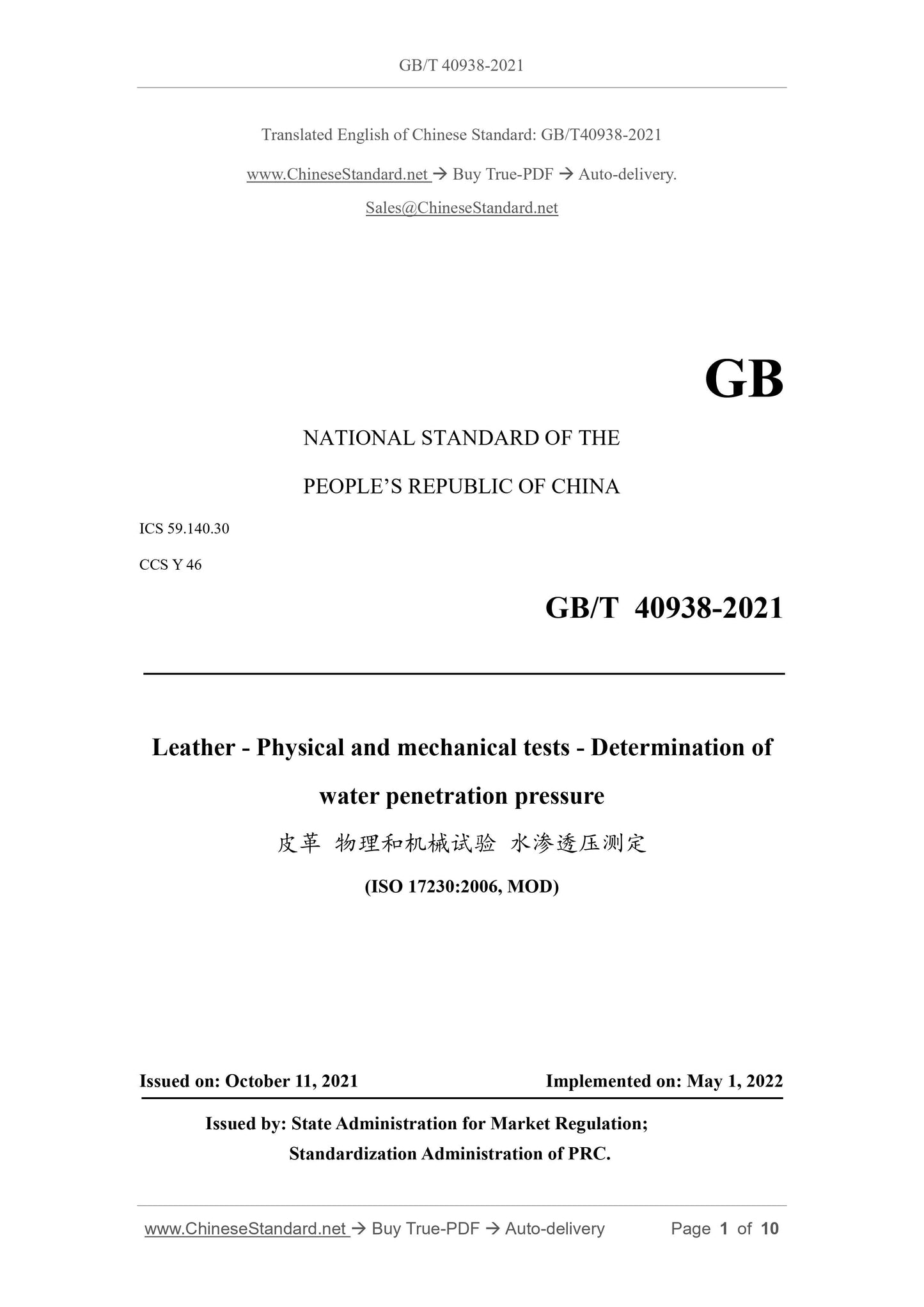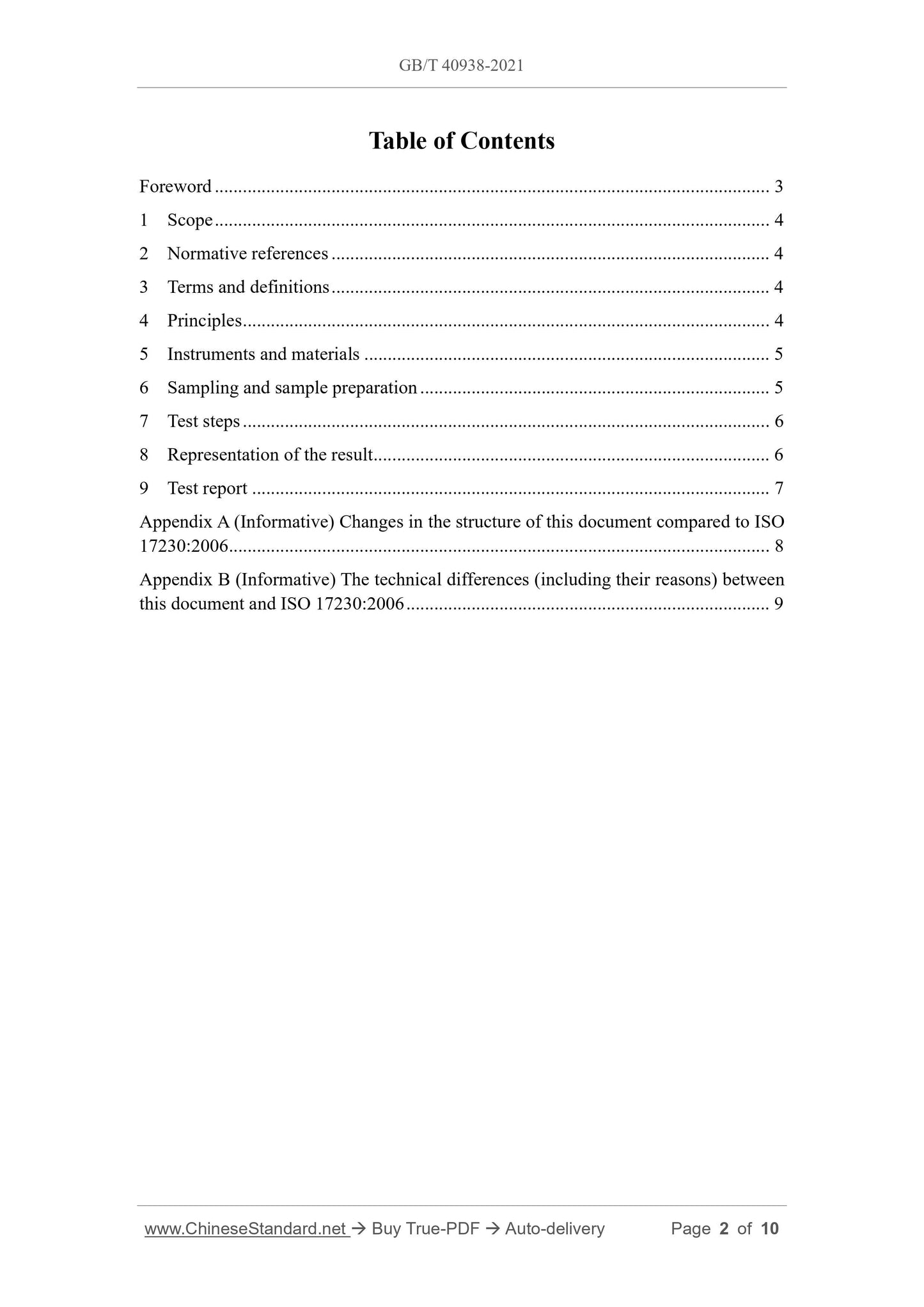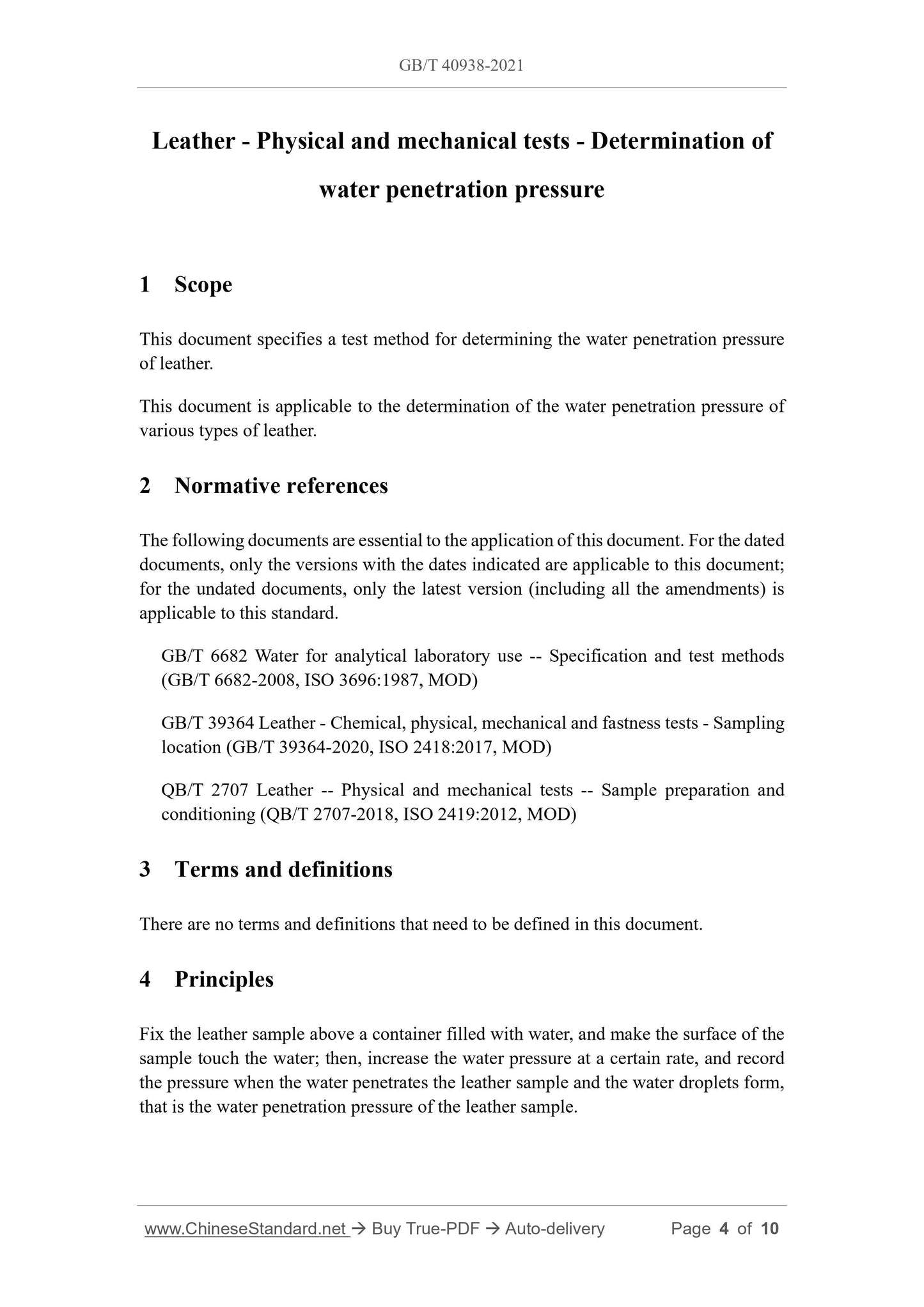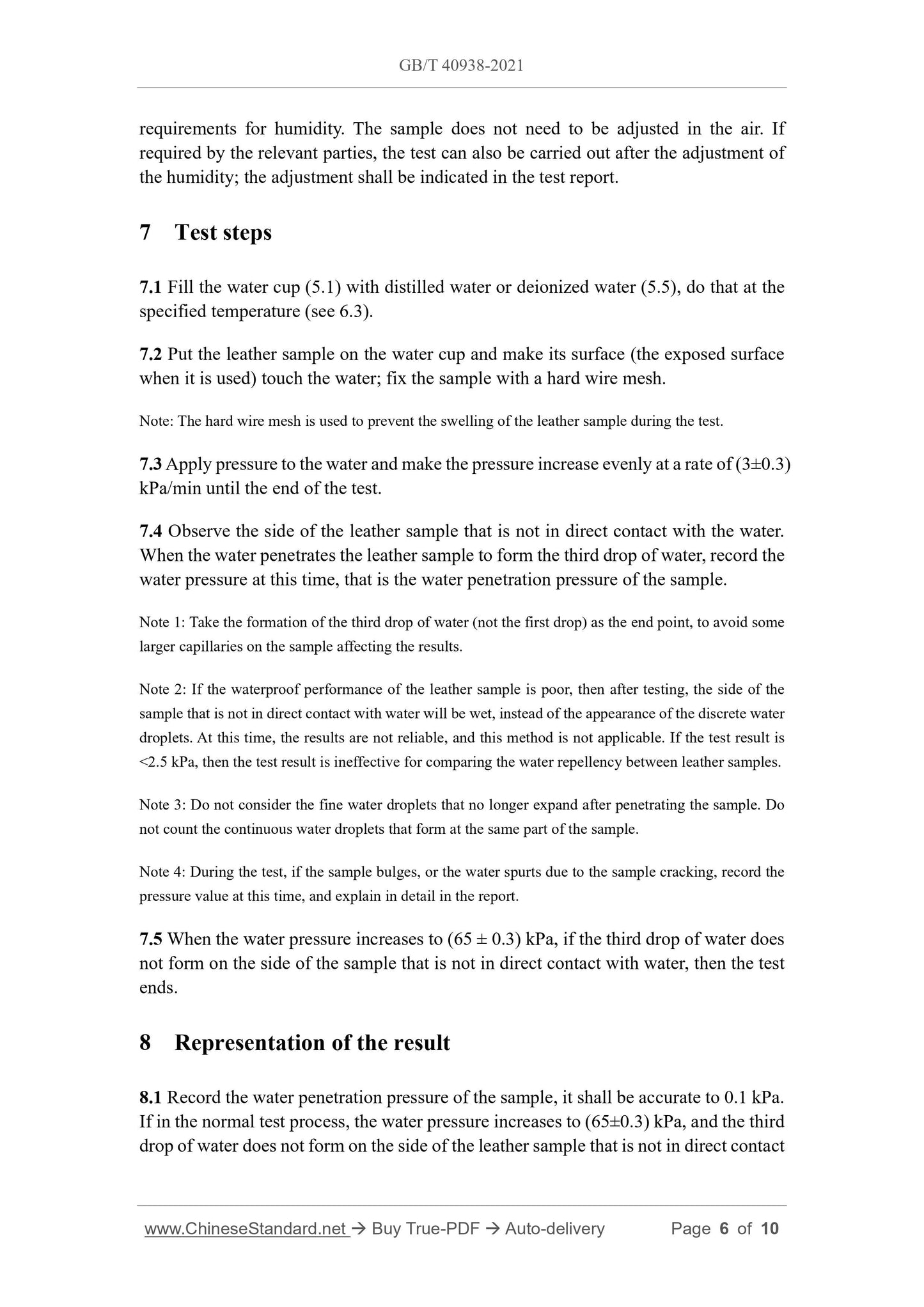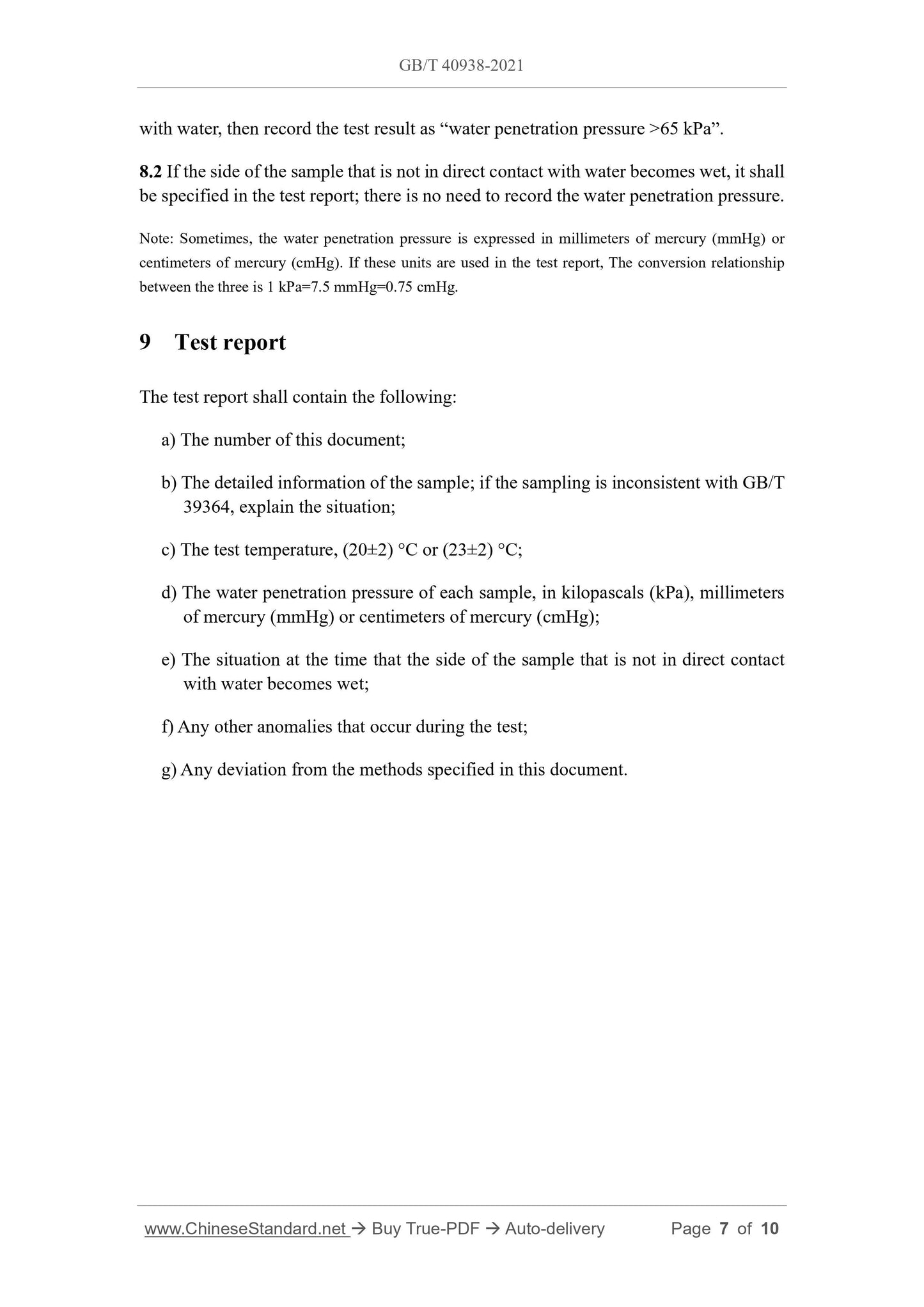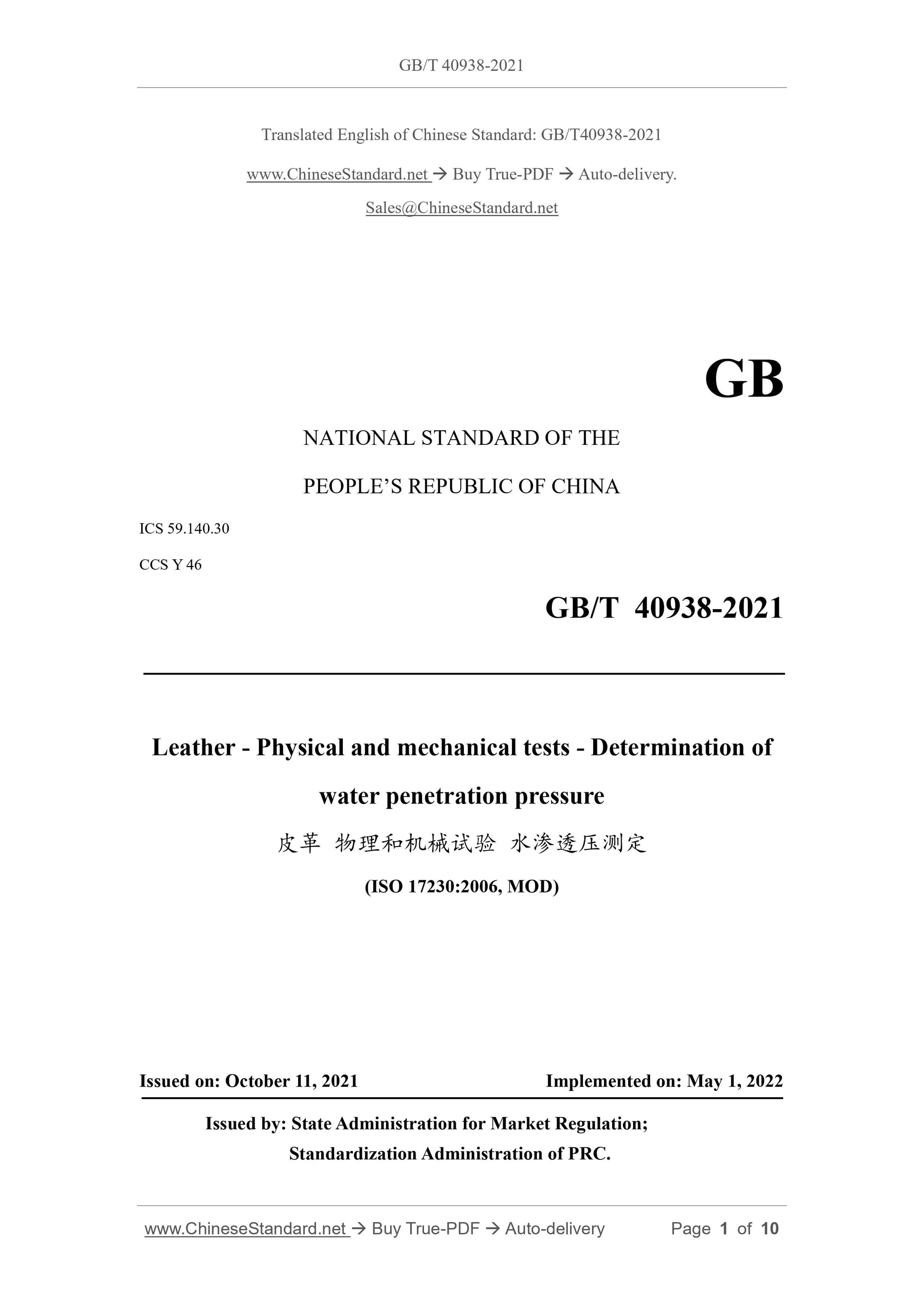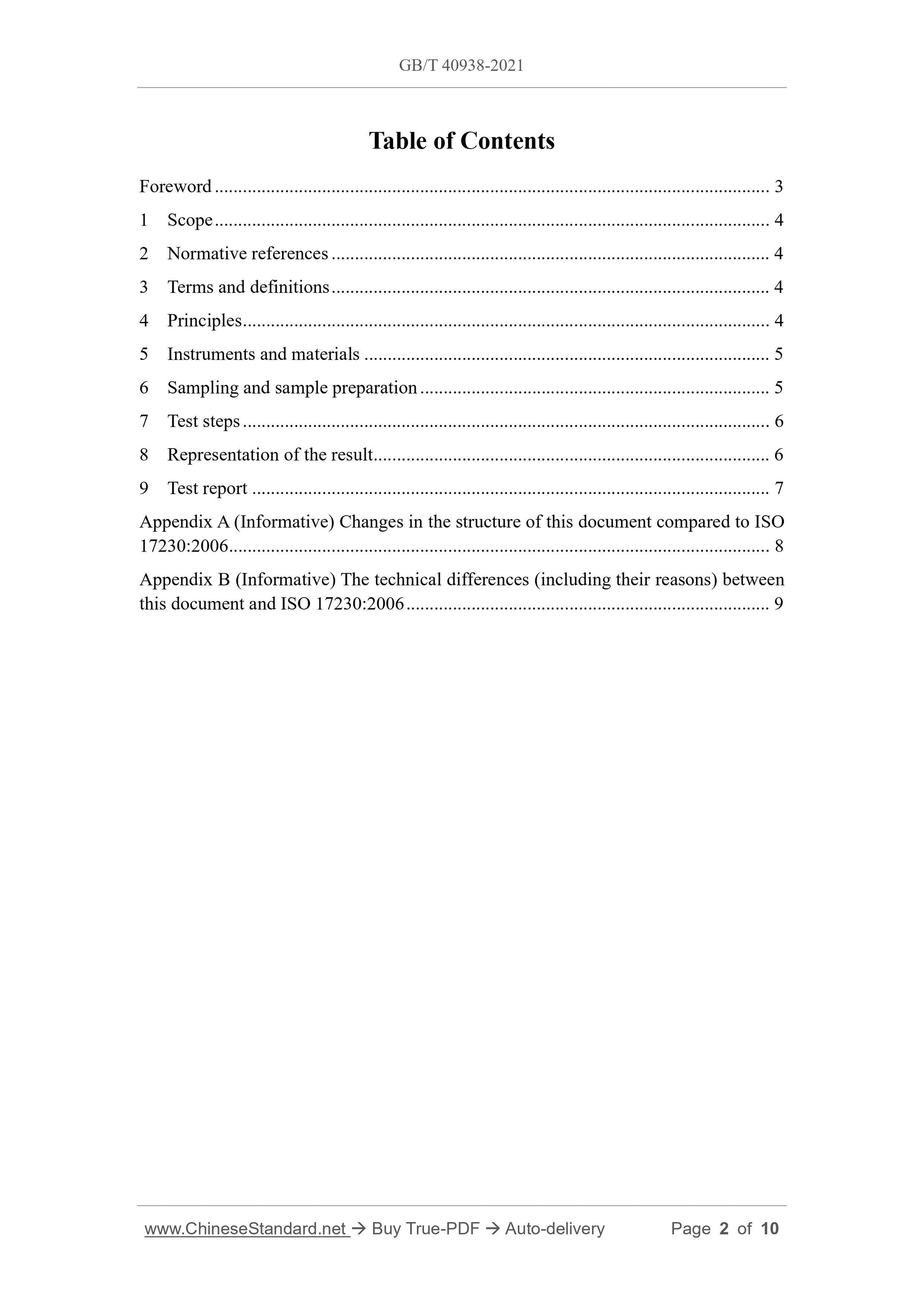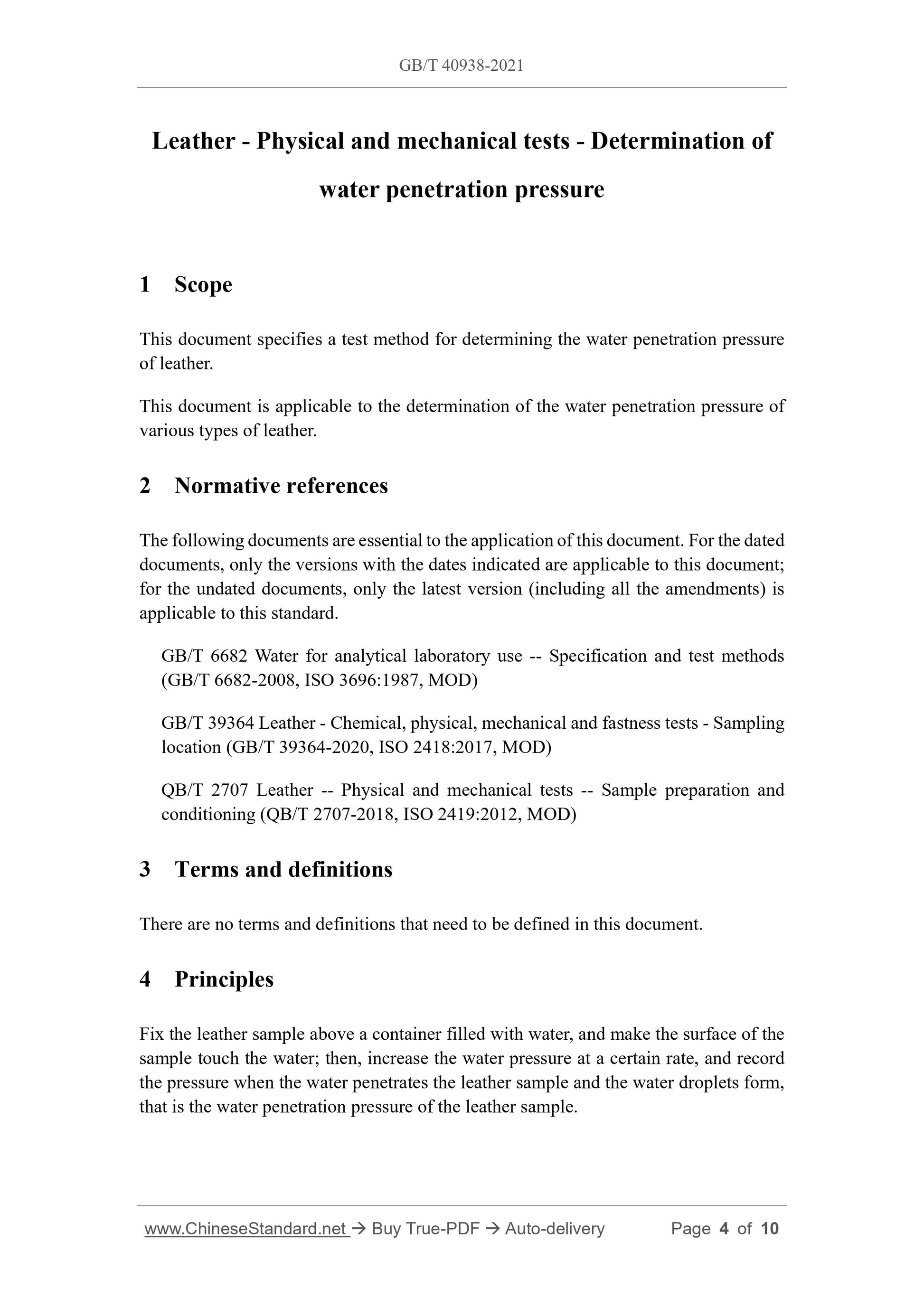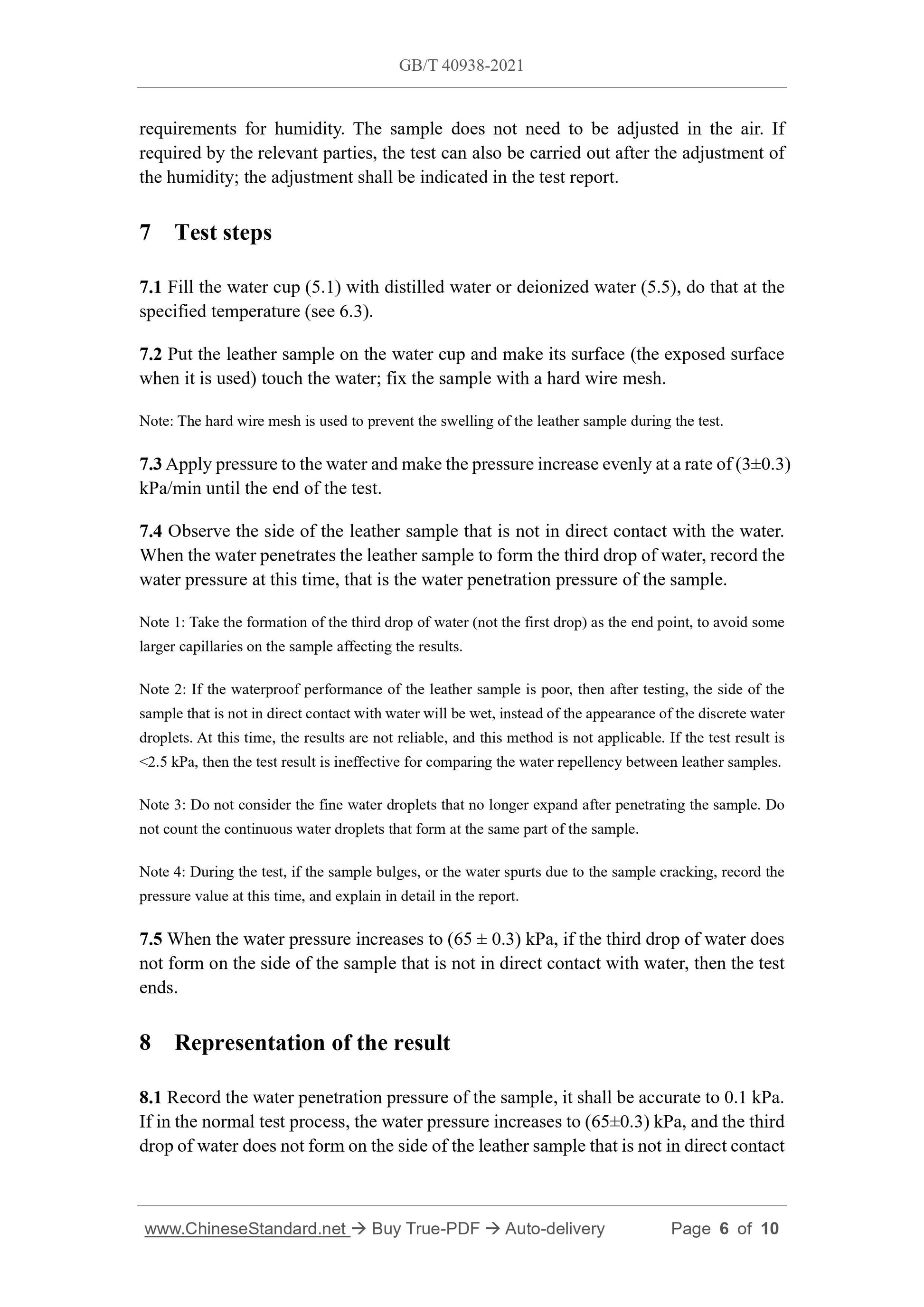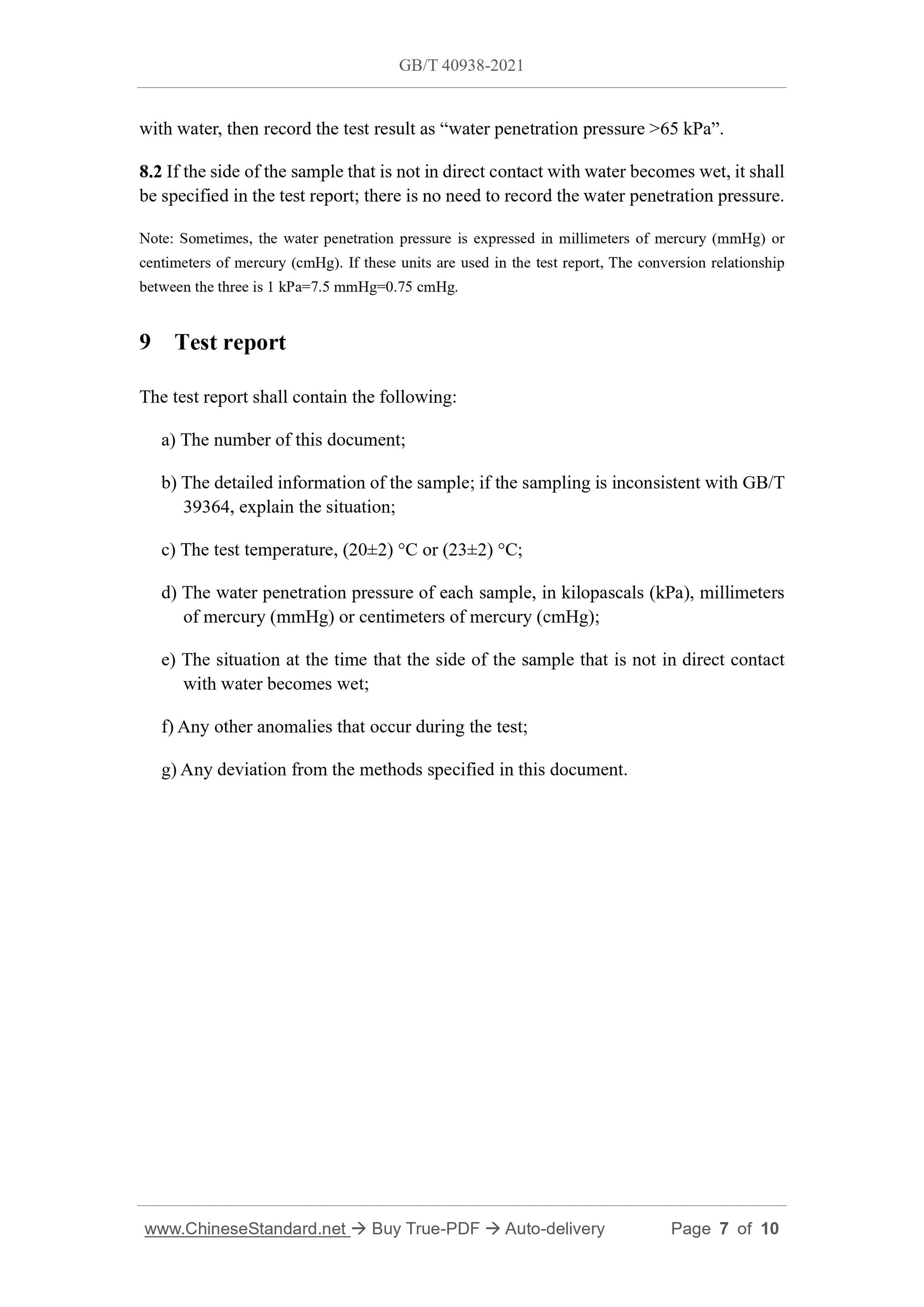1
/
of
5
www.ChineseStandard.us -- Field Test Asia Pte. Ltd.
GB/T 40938-2021 English PDF (GB/T40938-2021)
GB/T 40938-2021 English PDF (GB/T40938-2021)
Regular price
$200.00
Regular price
Sale price
$200.00
Unit price
/
per
Shipping calculated at checkout.
Couldn't load pickup availability
GB/T 40938-2021: Leather - Physical and mechanical tests - Determination of water penetration pressure
Delivery: 9 seconds. Download (and Email) true-PDF + Invoice.Get Quotation: Click GB/T 40938-2021 (Self-service in 1-minute)
Newer / historical versions: GB/T 40938-2021
Preview True-PDF
Scope
This document specifies a test method for determining the water penetration pressureof leather.
This document is applicable to the determination of the water penetration pressure of
various types of leather.
Basic Data
| Standard ID | GB/T 40938-2021 (GB/T40938-2021) |
| Description (Translated English) | Leather - Physical and mechanical tests - Determination of water penetration pressure |
| Sector / Industry | National Standard (Recommended) |
| Classification of Chinese Standard | Y46 |
| Word Count Estimation | 10,140 |
| Issuing agency(ies) | State Administration for Market Regulation, China National Standardization Administration |
Share
